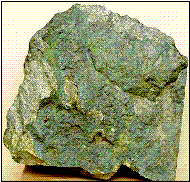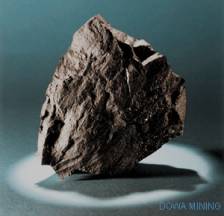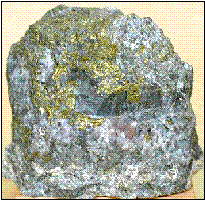|
Volcanic-hosted
feature is shown in the occurrence. A
typical Kuroko deposits are underlain
by extensive acidic volcanics where the
feeder stockwork or veins exist
in
the strongly silicified part of the volcanics.
|
@@@@@@ |

|
|
Yellow ore is characterized by
Pyrite-Chalcopyrite assemblage.
|
|
|

|
|
Black Ore is
mainly composed of sphalerite and Galena with subordinate amounts of
Chalcopyrite, Tetrahedrite and gold and silver minerals.
|
|
Strata-bound evidences are shown in the stratigraphic
position where the
typical Kuroko deposit is hosted within
the unit of distinctive
volcano-sedimentary sequence which is
constituted of the footwall dacite
lava and the pyroclastics and the hangingwall
mudstone intercalated in
pumice to lapilli tuff.
|
|
|
|
Massive sulfide and sulfate
ore bodies are comprised of proximal
and distal types. Strictly speaking,
the term of massive sulfide should be
used only for the proximal ore
,
because the distal ore has much sedimentary
features such as size grading
of ore and alternative banding of ore
seam and mudstone.
|
| @@@@@@ |

|
|
Siliceous black ore is also composed of
sphalerite and galena. The ore is located
in the footwall unit as a
disseminated or stockwork type which
is usually distributed in the
peripheral part of a unit ore body.
|
|
|

|
|
Siliceous Yellow ore is economically
same mineral composition , but different
mode of occurrence to the yellow
ore. Ordinary disseminated to stockwork
sometimes vein or veinlets ore is
observed in the footwall rocks directly
under the massive sulfide.
|
| Polymetallic feature is characterized by many kinds of
constituent minerals; sphalerite, galena,
chalcopyrite and pyrite associated with subordinate
amounts of tetrahedrite and Ag-minerals with
much useful minor or rare metals as impurity
such as Antimony, Thallium, Gallium and so
on. |
|



